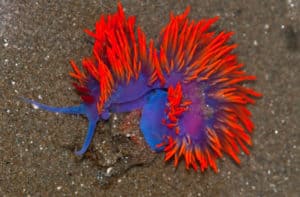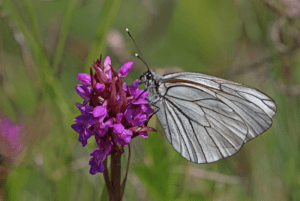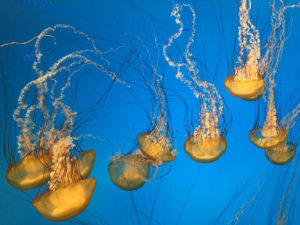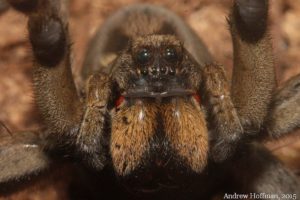Polar Bear Facts Firstly, growing to roughly the same size as the Kodiak, the magnificent Polar Bear represents one of the two largest species of bear on earth. It has also, rather understandably, evolved to fill a highly specific ecological niche, given the unique nature of its environment. Also, aside from the native Inuits who have […]
Spanish Shawl
Spanish Shawl Facts Related Articles Spanish Shawl Physical Description To be certain, without doubt, the amazing Spanish Shawl truly mesmerizes those fortunate enough to see it. The species nonetheless does not do so due to sheer physical size. That’s obvious because of the fact that it remains a physically diminutive creature. This even holds true […]
7 Astounding Polar Creatures
7 Astounding Polar Creatures Nature thrives in virtually all regions of the globe, even those many people consider to be incapable of surviving a thriving ecosystem. Such is the case with these, our choices for 7 Astounding Polar Creatures. Certainly, they represent only the tip of the iceberg, so to speak, when it comes to […]
7 Truly Breathtaking Mammals
7 Truly Breathtaking Mammals We present to you our choice for a list of 7 Truly Breathtaking Mammals. Of course, any such list remains entirely subjective. Animals that we consider deserving of inclusion on this list might not agree with your own thoughts on the matter. Certainly, the sheer number of animal species existing in […]
Goldsmith Beetle
Goldsmith Beetle Facts Related Articles Goldsmith Beetle Physical Description Firstly, despite its rather obvious physical appeal, the wonderfully colorful Goldsmith Beetle remains a roughly average-sized variety of scarab beetle. This holds true because mature adults typically attain an average body length of about 1 in (2.5 cm). Furthermore, its bright yellow coloring also represents its […]
7 Stunning North American Lepidoptera
7 Stunning North American Lepidoptera Few people would dispute the opinion that the Order of Lepidoptera (butterflies and moths) contains some of the most incredibly beautiful invertebrates in the world. They are also among the most widespread of all insects. Various species live throughout virtually all temperate and tropical portions of the Earth. It remains […]
Cecropia Moth
Cecropia Moth Facts Related Articles Cecropia Moth Physical Description The dazzling Cecropia Moth actually manages to impress those who encounter it in a variety of ways. That’s because it evolved to be both beautiful and large for its kind. In fact, it ranks as the largest known variety of moth native to its portion of […]
Pacific Sea Nettle
Pacific Sea Nettle Facts Related Articles Pacific Sea Nettle Physical Description Although it amazes due to its great beauty, among other reasons, the Pacific Sea Nettle only ranks as a medium-sized species of true jellyfish. The species hold this ranking because of the size of its bell. This quite impressive feature of the creature attains […]
Pingualuit Crater Lake
Pingualuit Crater Lake Facts Related Articles Pingualuit Crater Lake Physical Description The astounding feature known as Pingualuit Crater Lake fits in perfectly with its surroundings. This landscape itself has been frequently described as lunar. This very state of relative desolation, however, only serves to further highlight the magnificence of the site. The marvelous location also […]
Carolina Wolf Spider
Carolina Wolf Spider Facts Related Articles Carolina Wolf Spider Physical Description Perhaps most notably, exceptional specimens of the Carolina Wolf Spider attain a leg span of as much as 4 in (10 cm). A slight degree of sexual dimorphism also presents itself in this species. That occurs because females of the species average about 25% […]


















